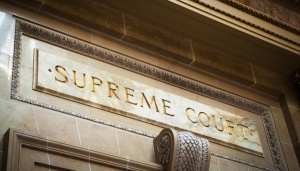Employment Law Report
U.S. Supreme Court Addresses Statute of Limitations in Constructive Discharge Case
 On May 23, 2016, the U.S. Supreme Court ruled that the limitations period for a constructive discharge claim under Title VII runs from the date the employee gives notice of his resignation, as opposed to the employer’s alleged discriminatory behavior, in Green v. Brennan, Postmaster General, No. 14-613, 2016 WL 2945236 (U.S. May 23, 2016). The case involves Marvin Green, who worked for the U.S. Postal Service for 35 years. He applied for a promotion in a nearby post office, but was not selected for the position. As an African American male, Mr. Green complained that he was passed over because of his race.
On May 23, 2016, the U.S. Supreme Court ruled that the limitations period for a constructive discharge claim under Title VII runs from the date the employee gives notice of his resignation, as opposed to the employer’s alleged discriminatory behavior, in Green v. Brennan, Postmaster General, No. 14-613, 2016 WL 2945236 (U.S. May 23, 2016). The case involves Marvin Green, who worked for the U.S. Postal Service for 35 years. He applied for a promotion in a nearby post office, but was not selected for the position. As an African American male, Mr. Green complained that he was passed over because of his race.
Mr. Green began experiencing problems with his supervisors shortly after filing his complaint, which culminated in two supervisors accusing him of committing a federal crime. Following an investigation, Mr. Green and the Postal Service entered into a settlement agreement on December 16, 2009, whereby the Postal Service agreed not to pursue any criminal charges against Mr. Green in exchange for his agreement to leave his current position. The settlement agreement allowed Mr. Green to retire or accept a position for a considerably lower salary in a different location. Mr. Green submitted his resignation on February 9, 2010.
Forty-one days after submitting his resignation (and 96 days after signing the settlement agreement with the Postal Service), Mr. Green contacted an EEOC counselor, alleging that he had been constructively discharged. In particular, Mr. Green complained that his supervisors’ threats of criminal charges and the settlement agreement constituted retaliation for his complaint of race discrimination.
Eventually, Mr. Green filed a lawsuit against the Postal Service in federal court, claiming constructive discharge, among other things. On summary judgment, the Postal Service argued that his claim was untimely since he contacted an EEOC counselor more than 45 days after signing the settlement agreement. The trial court granted the Postal Service’s motion, and the U.S. District Court for the Tenth Circuit affirmed. Mr. Green appealed to the U.S. Supreme Court. Although private employees are not bound by the same 45-day limitations period as Mr. Green, the case addressed, and ultimately resolved, an interesting circuit split on the issue.
The U.S. Supreme Court held that “a [constructive discharge] claim accrues only after an employee resigns.” Id. at *6. The Court’s holding is based on the fact that “a claim that an employer constructively discharged an employee is no different from a claim that an employer actually discharged an employee.” Id. Because the “limitations period should not begin to run until after the discharge itself” in an actual discharge case, the Court concluded that the clock does not begin to run in a constructive discharge case until the employee gives notice of his resignation. Id.
The Court also explained that its holding “makes a good deal of practical sense” because “[s]tarting the limitations clock ticking before a plaintiff can actually sue for constructive discharge serves little purpose in furthering the goals of a limitations period—and it actively negates Title VII’s remedial structure.” Id. at *7.
Justice Thomas opined in the dissent that not only does “the majority expand[] the constructive-discharge doctrine beyond its original bounds[,]” but it “cements the [mistaken] notion that constructive discharge is an independent cause of action – and not a mere counterdefense ….” Id. at *23.